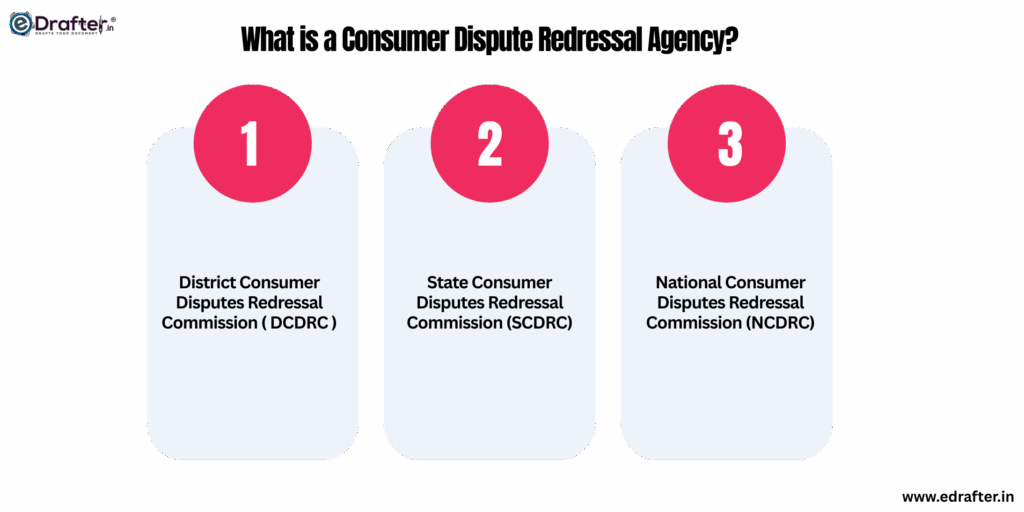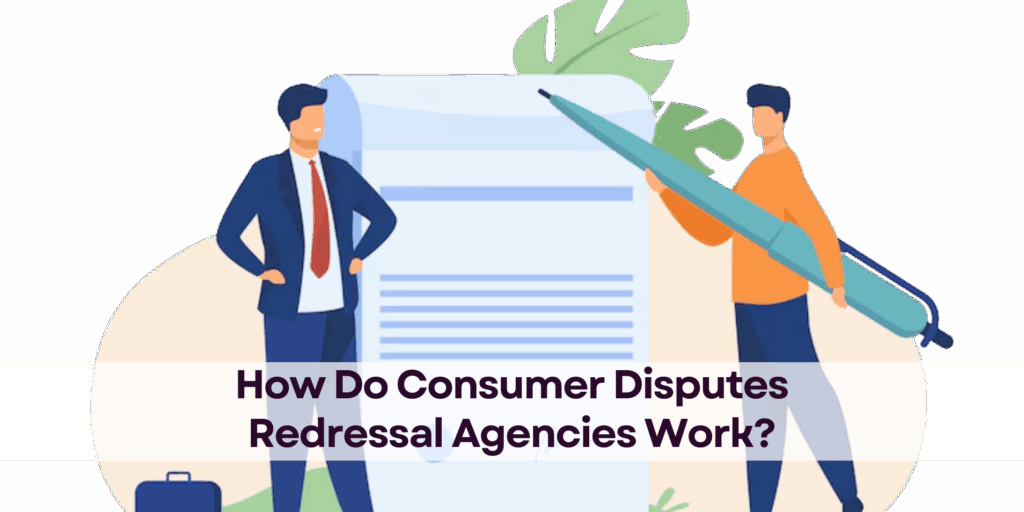Table Of Content
- What is the Consumer Protection Act?
- What is a Consumer Dispute Redressal Agency?
- How Do Consumer Disputes Redressal Agencies Work?
- How to File a Consumer Complaint?
- How eDrafter Can Help You File Consumer Complaints?
- Conclusion
In India, whenever you receive a defective product or unsatisfactory service, consumer redressal agencies make sure that your rights as a consumer are protected and that none of the businesses can mislead you. These agencies play a crucial role in protecting consumer rights and ensuring businesses remain accountable. But how exactly do they work? Let’s break it down.
What is the Consumer Protection Act?
The Consumer Protection Act is a law designed to safeguard consumers’ interests by providing a framework for addressing grievances. Originally enacted in 1986 and updated in 2019, this Act establishes consumer dispute redressal agencies at different levels to resolve complaints efficiently.
The Act covers various unfair trade practices, including false advertising, defective products, and poor services. It empowers consumers to seek compensation and justice through structured redressal agencies under the Consumer Protection Act.
Also Read – Difference Between Consumer Court And Consumer Forum
What is a Consumer Dispute Redressal Agency?
A consumer dispute redressal agency is a legal body established to handle complaints from consumers who feel wronged by a product or service. These agencies function at three levels:

- District Consumer Disputes Redressal Commission (DCDRC): It deals with cases where the claim is up to ₹1 crore.
- State Consumer Disputes Redressal Commission (SCDRC): HSCDRC handles appeals from DCDRC and complaints where the claim is between ₹1 crore and ₹10 crores.
- National Consumer Disputes Redressal Commission (NCDRC): NCDRC is the highest level of appeal, addressing appeals from SCDRC and cases exceeding ₹10 crores.
Each types of counsumer court or you can say redressal agencies operates under the framework of the Consumer Protection Act, ensuring that consumer grievances are heard and resolved fairly.
How Do Consumer Disputes Redressal Agencies Work?
These redressal agencies under the Consumer Protection Act follow a structured process to ensure that consumer complaints are addressed efficiently:
- Filing a Complaint: Consumers submit a written complaint with relevant details like receipts, proof of purchase, and evidence of deficiency in service.
- Admission and Review: The agency reviews the complaint in 21 days to determine if it falls within its jurisdiction.
- Notice to the Opposing Party: The company or seller involved is given a chance to respond within 30 days, extendable up to 15 days.
- Hearing and Examination: Both parties present their arguments and evidence.
- Decision and Compensation: If the agency finds in favour of the consumer, it can order refunds, replacements, or compensation.
For example, suppose you bought a television with a warranty, and the company refuses to repair it despite multiple complaints. In that case, you can file a case with the consumer disputes redressal agency at the district level.
How to File a Consumer Complaint?
Filing a complaint with consumer redressal agencies is simple if you know the correct steps. Here’s what you need to do:
- Collect all relevant documents, including invoices, warranty cards, emails, and chat records.
- Clearly state the issue, include the necessary details, and specify the compensation you seek.
- File it online or offline with the appropriate redressal agency under the Consumer Protection Act.
- If required, appear before the commission to present your case.
- Monitor the progress and comply with any additional requirements.
How eDrafter Can Help You File Consumer Complaints?
Understanding and getting through the steps can be complex and tiring, but that’s where eDrafter comes in. This platform simplifies the process of filing consumer complaints by providing:
- Expert advice: You can book consultancy online and get the correct legal advice from the advocates.
- Drafting assistance: You get expertly written legal notices/complaints that meet legal standards.
- Document verification: We ensure that you have the necessary evidence.
- Guidance on legal proceedings: We help you understand the steps involved.
With eDrafter, filing a complaint with consumer disputes redressal agencies and track of consumer complaints becomes easier and more efficient.
Conclusion
If you’ve ever been on the receiving end of poor service or a defective/damaged product, remember that consumer redressal agencies are there to protect your rights. Consumer Protection Act provides a structured and effective way to resolve disputes. Whether it’s a faulty gadget, misleading advertisement, or an unfair trade practice, you can seek justice through the redressal agencies under the Consumer Protection Act. With platforms like eDrafter, the process becomes even simpler.


